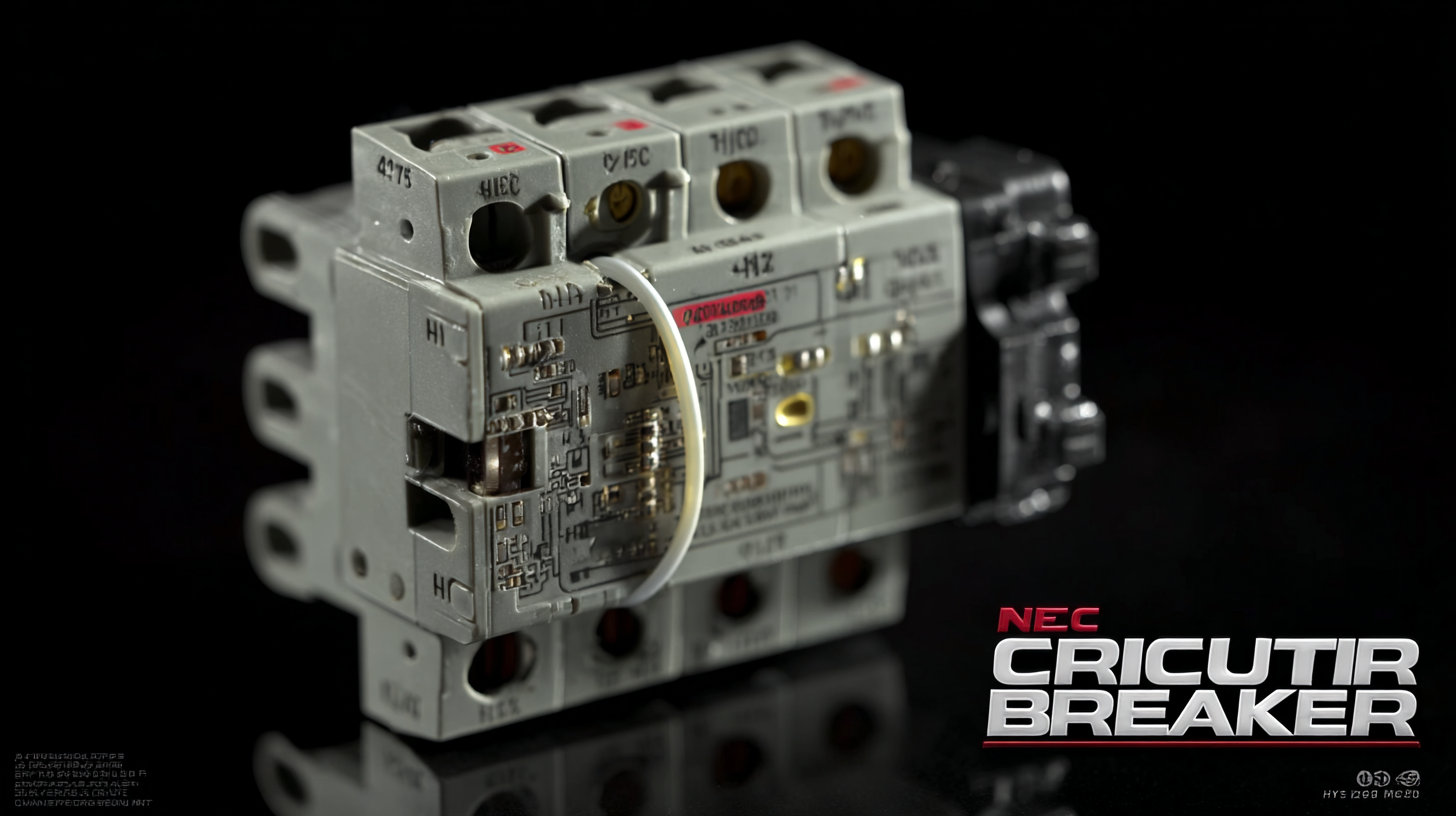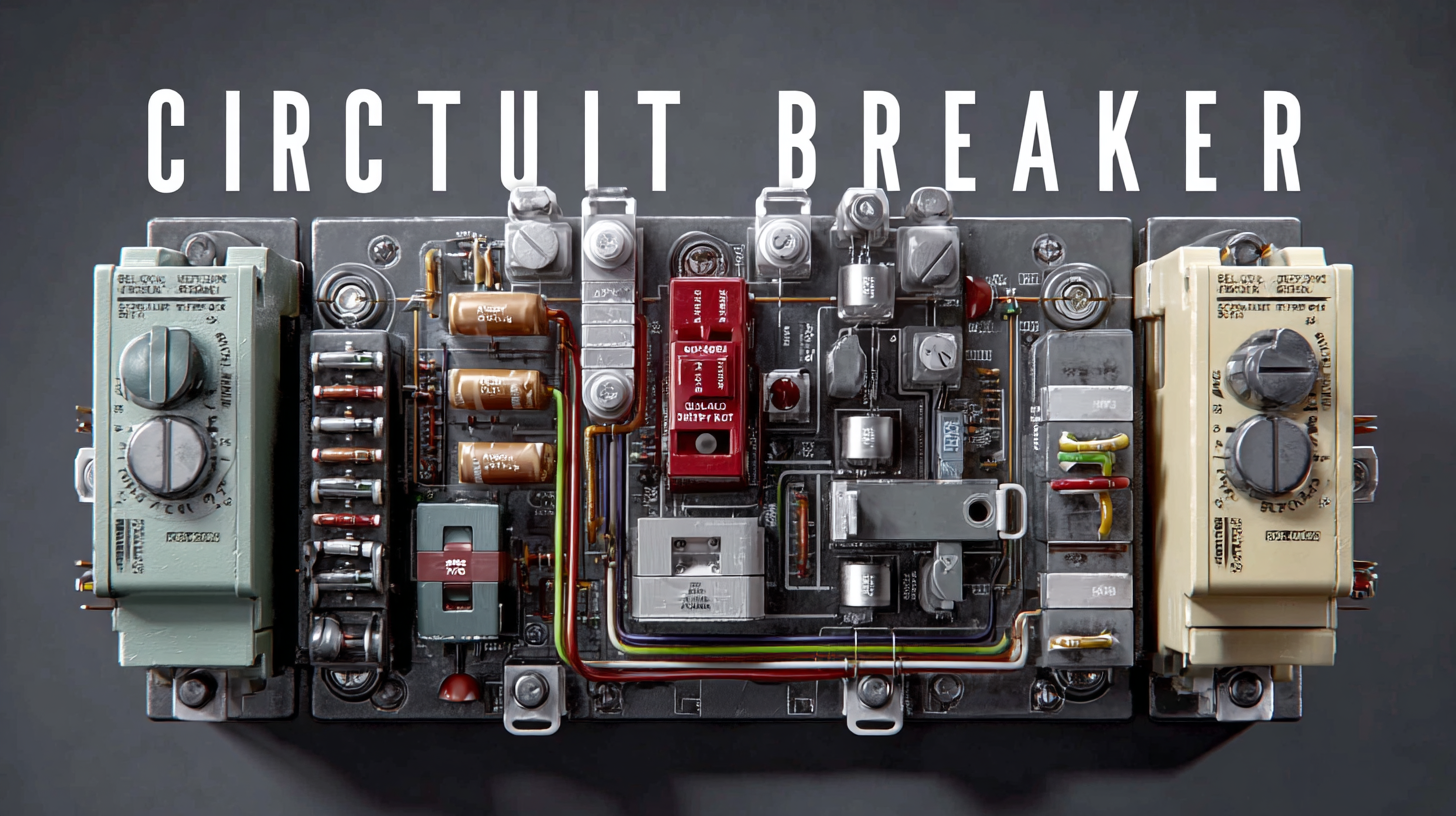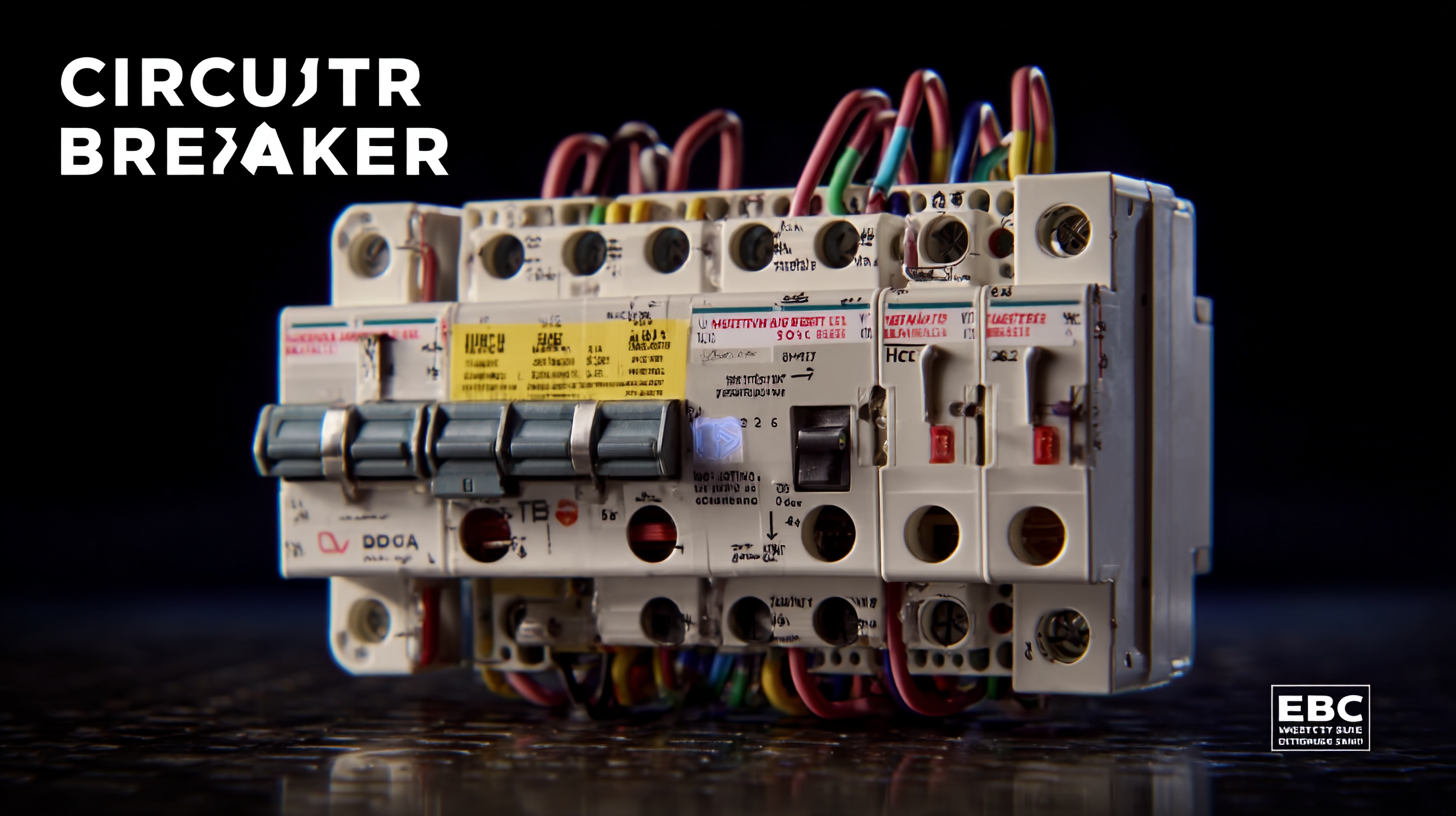Understanding the Best Circuit Breaker Types for Optimal Electrical Safety
In today's rapidly evolving electrical landscape, ensuring optimal safety is paramount, and circuit breakers play a critical role in this regard. According to the National Fire Protection Association (NFPA), electrical failures contribute to approximately 13% of all residential fires in the United States. Selecting the right circuit breaker can significantly mitigate these risks, as it acts as an essential safeguard against overloads and short circuits.

A report from the Electrical Safety Foundation International (ESFI) highlights that about 80% of all electrical incidents are preventable through proper circuit protection. This underscores the importance of understanding the various types of circuit breakers available—each designed to cater to specific applications and safety standards.
In this blog, we will explore the best circuit breaker types and strategies for ensuring maximum electrical safety in both residential and commercial settings.
Key Characteristics of Different Circuit Breaker Types for Electrical Safety
When it comes to electrical safety, understanding the different types of circuit breakers is essential. Each type is designed to protect electrical systems from faults, but their mechanisms and characteristics vary.
 For instance, thermal circuit breakers utilize heat generated by current flow to trip the circuit, making them suitable for situations where overload protection is the primary concern. On the other hand, magnetic circuit breakers respond instantly to short circuits, ensuring immediate cut-off to prevent potential fire hazards.
For instance, thermal circuit breakers utilize heat generated by current flow to trip the circuit, making them suitable for situations where overload protection is the primary concern. On the other hand, magnetic circuit breakers respond instantly to short circuits, ensuring immediate cut-off to prevent potential fire hazards.
Another type worth noting is the residual current circuit breaker (RCCB), which is crucial for protecting against electric shocks. It detects imbalances in electrical currents and disconnects the circuit almost instantaneously. This makes RCCBs critical in settings such as bathrooms or outdoor areas, where the risk of electric shock is heightened.
Additionally, the miniature circuit breaker (MCB) offers precise overload protection and is suitable for residential and commercial installations, allowing for reliable circuit management and reducing the risk of electrical fires. By understanding these key characteristics, you can make informed decisions to enhance electrical safety in your environment.
Comparative Analysis of Miniature Circuit Breakers vs. Molded Case Circuit Breakers
When it comes to electrical safety, the choice between Miniature Circuit Breakers (MCBs) and Molded Case Circuit Breakers (MCCBs) can significantly influence system reliability and protection. MCBs are commonly employed in residential and light commercial applications due to their compact size and ability to handle small loads up to 100A. According to the Institute of Electrical and Electronics Engineers (IEEE), MCBs provide fast tripping mechanisms, ensuring that circuit faults are disconnected quickly, thus minimizing the risk of electrical fires and equipment damage.
On the other hand, MCCBs cater to larger industrial applications, handling loads typically between 100A and 2500A. These circuit breakers allow for greater customization, including adjustable trip settings and added features such as ground fault protection. A report from the National Electrical Manufacturers Association (NEMA) indicates that MCCBs can withstand higher short-circuit currents, making them more robust in scenarios where larger machinery is involved. This adaptability not only enhances safety but also prolongs the lifespan of electrical installations, emphasizing the need for careful selection based on specific operational demands.
Understanding the Best Circuit Breaker Types for Optimal Electrical Safety
Understanding the Role of Ground Fault Circuit Interrupters in Preventing Electrical Hazards
Ground Fault Circuit Interrupters (GFCIs) play a critical role in electrical safety by preventing hazardous electrical shocks. Particularly in environments prone to moisture, such as kitchens and bathrooms, GFCIs detect ground faults and interrupt the electrical circuit, thus significantly reducing the risk of life-threatening accidents. Recent developments indicate a growing awareness and adoption of GFCIs, demonstrated by an uptick in market demand as homeowners and businesses prioritize safety measures in accordance with new regulations.
As the holiday season approaches, the emphasis on using GFCIs becomes even more pertinent. The National Fire Protection Association (NFPA) has highlighted the importance of inspecting Christmas lights and other decorations, advocating for the use of GFCI-protected outlets to minimize the risk of electrical fires. This season, incorporating GFCIs into your electrical safety plan not only ensures protection against shocks but also safeguards your home from potential fire hazards, creating a safer environment for festivities.
Importance of Selecting the Right Circuit Breaker for Residential vs. Commercial Applications
When it comes to ensuring electrical safety, the importance of selecting the right circuit breaker cannot be overstated, particularly when comparing residential and commercial applications. Circuit breakers serve as the first line of defense against electrical overloads, protecting both individuals and property. In residential settings, the focus is often on relatively lower current demands, where breakers must not only handle typical household loads but also address the risk of ground faults. In contrast, commercial applications require circuit breakers that can accommodate higher capacities, considering the complex and varied electrical needs of businesses, which may involve large equipment and machinery.
Recent trends in the circuit breaker market highlight a growing demand for advanced protection solutions in both sectors. The low-voltage fuse market, for example, is projected to experience significant growth as various types of fuses and breakers are increasingly integrated into both residential and commercial designs. This surge is largely driven by the need for reliable safety mechanisms that can mitigate the risks associated with electrical faults. As the smart technology landscape evolves, circuit breakers are becoming smarter, offering features such as remote monitoring and predictive maintenance, thus enhancing electrical safety across the board. It has never been more critical for consumers and businesses alike to understand the nuances of selecting appropriate circuit breakers tailored to their specific needs.
Understanding the Best Circuit Breaker Types for Optimal Electrical Safety
| Circuit Breaker Type | Description | Residential Use | Commercial Use | Safety Features |
|---|---|---|---|---|
| Thermal Circuit Breaker | Uses bimetallic strip to detect overload | Commonly used in home electrical panels | Suitable for smaller commercial applications | Time delay for preventing nuisance tripping |
| Ground Fault Circuit Interrupter (GFCI) | Detects imbalances between incoming and outgoing current | Ideal for bathrooms, kitchens, and outdoor circuits | Used in wet area commercial settings | Quick disconnect in case of ground faults |
| Arc Fault Circuit Interrupter (AFCI) | Detects harmful arcing conditions | Recommended for bedrooms and living areas | Increasingly required in new commercial builds | Prevents electrical fires caused by arcs |
| Miniature Circuit Breaker (MCB) | Protects against short circuits and overloads | Used for individual circuits in homes | Common in light commercial settings | Manual reset after tripping |
| Residual-Current Device (RCD) | Monitors current flow to prevent electrocution | Essential in high moisture areas | Widely used in commercial and industrial sites | Critical for protecting against electric shock |
Latest Trends in Smart Circuit Breakers and Their Impact on Electrical Safety Standards
The rise of smart circuit breakers is reshaping the electrical safety landscape, pushing past traditional standards into innovative territory. The intelligent circuit breakers that combine protection, energy metering, and connectivity represent a significant shift. They not only protect electrical systems but also provide real-time data and monitoring capabilities, which are essential in modern electrical grids. This evolution aligns with the projected growth of the global DC circuit breaker market, which was estimated at $4.13 billion in 2023 and is anticipated to expand at a CAGR of 8.7% through 2030.

Moreover, the molded case circuit breaker sector is gaining traction, particularly within the photovoltaic market, driven by increasing interest in renewable energy solutions. This segment shows promise as it offers insights into the performance and efficiency of solar energy systems, appealing to investors keen on sustainability. Reports indicate that the low voltage circuit breaker market will surpass $12.2 billion in 2024, growing steadily at a CAGR of 8.8% by 2034. These developments highlight the critical intersection of advanced technology, sustainability, and electrical safety standards that will define the future of the circuit breaker market.

